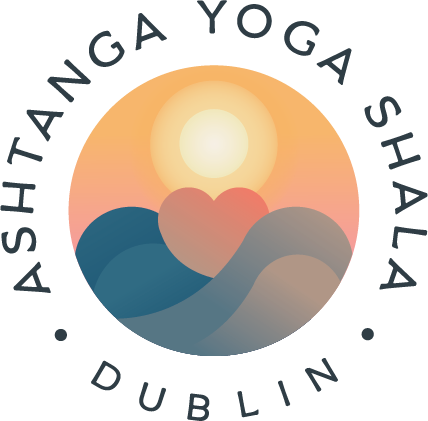Every breath is an opportunity to create space
I had a discussion with one of our students the other evening on Zoom and, as we were talking, I thought to myself that it would make a good subject for this edition of the moon-day news.
So I want to share with you my latest thoughts on the breath and how it relates to asana practice in our ashtanga yoga method.
It has been obvious to me for many years that the breath is the thing which makes this practice so powerful. As ashtanga yoga practitioners we've been paying attention to our breathing for many, many years. We've seen mindfulness practice entering the mainstream (and even more intense breathing methods like holotropic breathing or Wim Hof's breathing method) and so more and more people in the world are starting to realise how important and transformative breathing practices can be.
But there is a problem with how many of us are using the breath in ashtanga yoga which I have seen over and over again throughout my practice and teaching life. It's something I try to correct when I'm teaching but it's worth expanding on here a bit, I think.
For the sake of visualisation, imagine you are practising pascimattanasana (the first seated posture of the primary series, a seated forward fold with both legs straight and bringing the hands to touch the feet). You can even get into the posture to experiment with what I'm about to write. As you breathe in fully, you will feel a small increase in the amount of tension in the body (maybe in the backs of the legs or in the upper or lower back) and then, as you exhale, you will feel a small release of that tension. This is a natural process and happens in every posture, or even when we're completely inactive. That's why we naturally associate exhaling with the release of tension, like when we sigh with relief.
What happens in a yoga posture is that, as we increase the tension on the inhale, our body naturally expands and opens up (that's why it's hard to inhale fully in a posture that is already at the limit of our flexibility). This expansion sometimes makes some space in the body so we can move deeper into the posture on the exhale. But what I've noticed so many time over the year is that so many people use the space that they've just created to force themselves further into the posture, thus creating even more tension than was already there.
In fact, what we need to do is to follow that cycle of inhale and exhale (tension and release) to allow the body to become softer and more supple as we relax into the posture. Let gravity do the work of getting us further into the posture and forget the pushing, pulling, and straining that has become a habit for so many of us.
It's pretty simple and it seems obvious that we should be cultivating relaxation in the postures, but so few people actually do it.
The by-product of this approach is that we get deeper into each posture, in a relaxed way and, even more importantly, instead of building up an association of tension and straining with whatever particular posture we're working on, we actually build a happy association of release and relaxation.
If we do this for every new posture that we learn (right from the very beginning of our practice journey) we will avoid injury and cultivate the blissful experience of a yoga practice without the use of force.
Let me know what you think.
